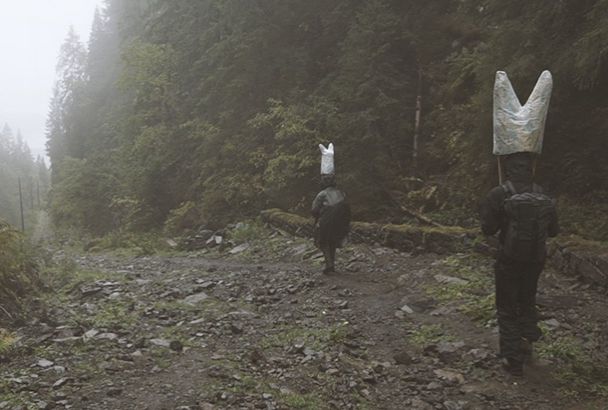
“We will not mill about. We walk with intention. Bodies erect, feet tuned and our sensory apparatus excited...“
— the collective voice of the masked Carriers of Bread and Seeds
During the early days of autumn in 2018, strange signals, uttering and voicing’s emerged from the tandoor oven inside the Flatbread Society Bakehouse. Entranced by the frequencies streaming from the tandoor, a flurry of bodies gathered in the Bakehouse. They spun around, circled the exterior of the Bakehouse and carried themselves to the roof as if to take flight. Alas, a small group congregated until the early morn and were seen moving slowly (by foot) at sunrise through the steaming compost heaps at Losæter.
The small group carrying masks above their heads disappeared through the steam on one side and appeared on the other side walking towards the city and through a wall of hi-rise buildings locally known as the Barcode. As they moved through the shadows of this mass of archi-tecture, the curtain of this theatrical procession opened. A marking of a departure from Bjørvika, Losæter and Oslo as center stage and the beginning of a theater of walking.
Scene 1: A GRAIN FIELD
On top of a tunnel in the middle of Oslo, an urban sæter, or pasture emerges into sight – one of the most vital blood veins in the body of urban agriculture in Norway. This urban farm scape is called Losæter. One central feature is a field of grains—a result of a long-term collaboration with Johan Swärd and Anders Næss of the cooperative called Økologisk Spesialkorn (meaning ‘organic special grains’). Johan Swård, has been involved in the grain field at Losæter from the very beginning—focusing on soil health, as much as the growth of the grains themselves. The grain field at Losæter is a demonstration field, cultivating seeds that have been ‘rescued’ from various locations in the Northern Hemisphere. Planted in a public space, these seeds display thousands of years of a complex, hand-to-hand network of knowledge and genetic resources. The seeds saved here are what farmers call “ancient grains”.
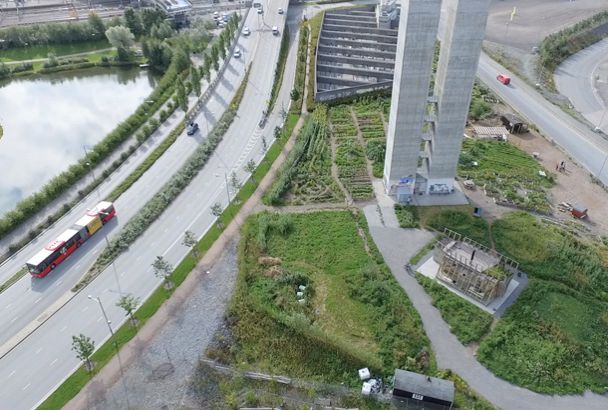
Scene 2: THE DEPARTURE
“Let´s go,” says the baker, carrying a tall backpack constructed from wood and filled with seeds, and a library of flatbreads. He is followed by five other Carriers of Bread and Seeds holding masks above their heads and each a bundle of freshly harvested grains strapped on their backs. They start the walk from Losæter and move towards the farm of Johan Swärd. Step by step they carefully bring this cargo from the city to the countryside. If you want to preserve a seed, you plant it. This is exactly what they are doing. And this walk is a celebration of the process of 5 years of seeding, caring, harvesting, threshing, milling, baking and finally sharing this “currency” with those met along the way and finally placed in the hands of Johan Swård who first gifted these seeds to Futurefarmers in 2013.
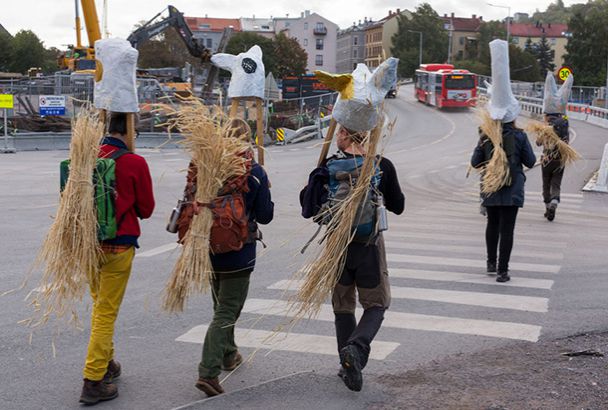
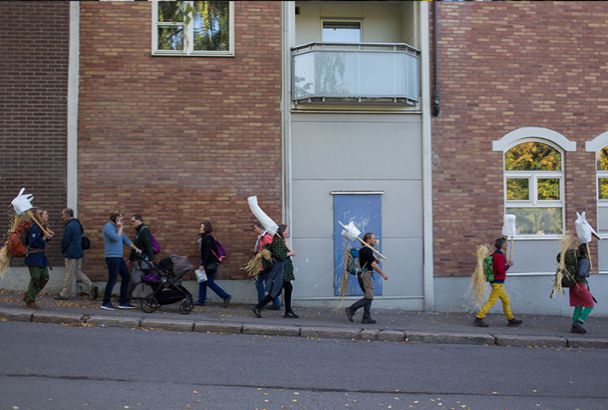
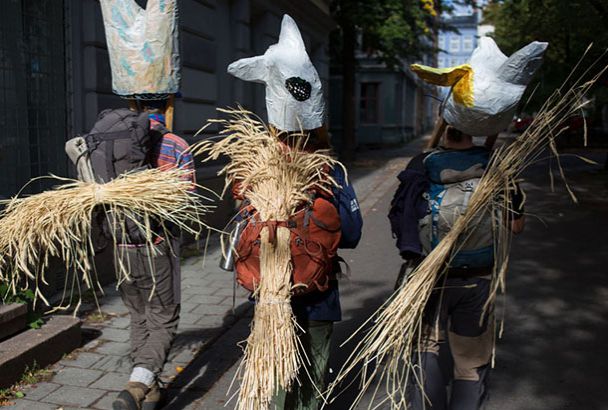
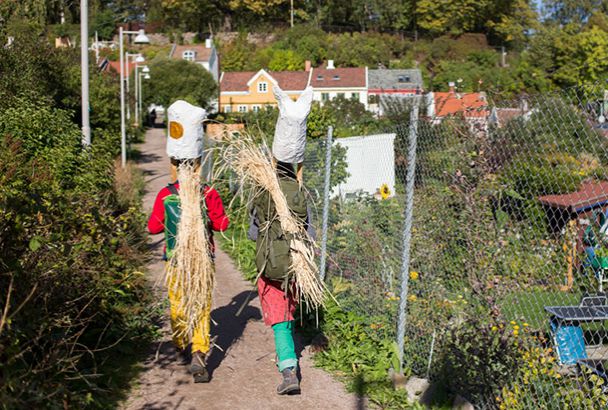
THE WALK
September 19- 23, 2018
Day 1 – 18km - Øverland Andelslandbruk, Gamle Ringeriksvei, Bekkestua
Day 2 – 23 km - Sundvollen, Krokkleiva
Day 3 – 27 km - Almveien 1, Henefoss
Day 4 – 18 km – Camphill Solborg, Jevnaker
Day 5 – 15km - Vestre Aschim Gård, Brandbu
Carriers of Bread and Seeds:
Emmanuel Rang, Baker, Åpent, Bakeri
Mads Palsrud, Growlab, Oslo
Cecile, Dawes, Food Studio Oslo
Marius Presterud, Oslo Apiary and Aviary, Beekeepers
Amy Franceschini, Artist/Futurefarmers, San Francisco
Lode Vranken, Architect/Futurefarmers, Gent, Belgium
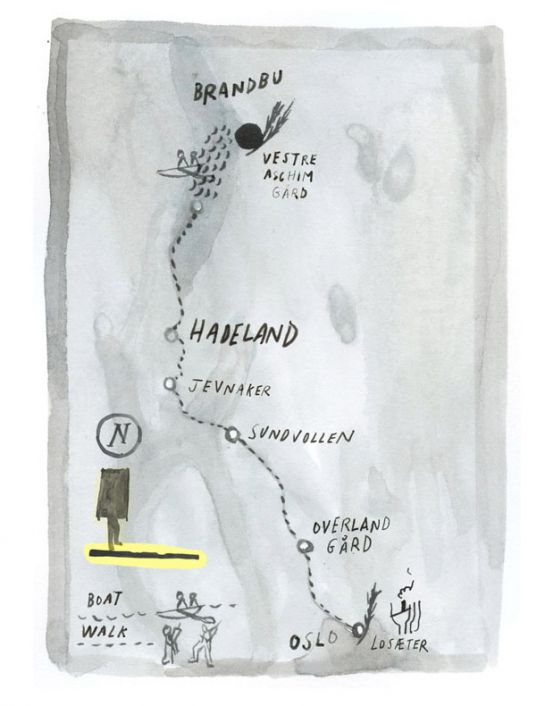
Scene 3: THE TANDOOR
Over a weekend, just before the long walk began, a contingency of local, national and international bakers were invited to awaken the tandoor oven in the Bakehouse. During this gathering, recipes, techniques and songs were shared and a library of flatbreads was created to carry Further On…; lefse, naan, tortilla, cracker, injera, pita, arepa, lavash and a special naan wrapped in banana leaf.
Bakers:
Vebjørn Stavseng & Kari Hirth of Bakelauget, Norway
Godt Bakt, Morocco
Mr. India, India
Antarjot Singh & Kimti Dogra of Punjab Tandoori
Balarani & Daughters
Pawan Sharma of UNITY

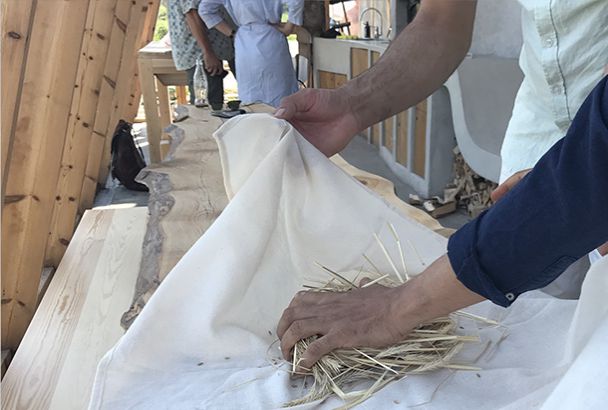

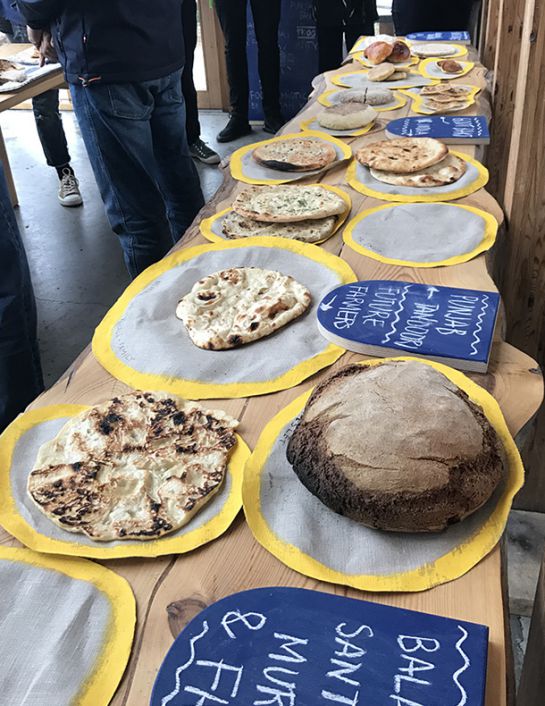
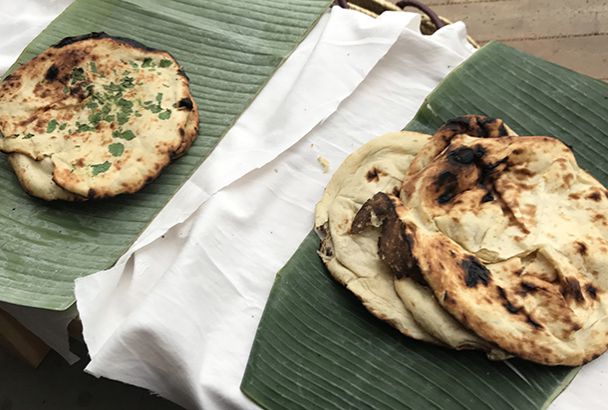
OVER LAND / COMMON LAND
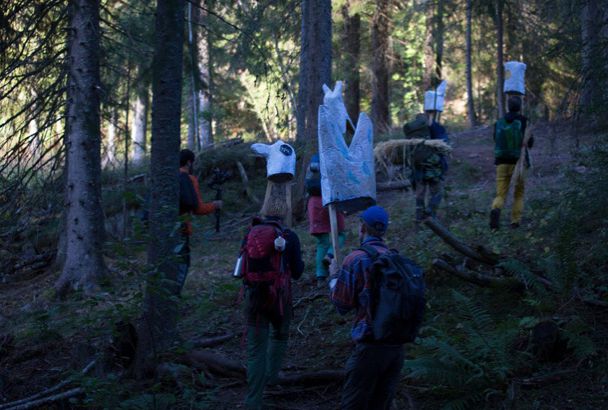
Further exercising Norway’s “right to roam”, also called the right of access (allemannsretten), Further On…to Land made use of the traditional right to move across land and camp temporarily. The walkers sketched out a general plan for sleeping each night, but the conditions of each day directed their final resting places. The first night was spent at Øverland farm on the outskirts of Oslo. A swell of Øverland members greeted the walkers as they approached followed by an exchange of bread, seeds, harvested greens and warm cider gifted by head farmer Kurt Oppdøl. A heavy storm approaching pushed the tired walkers to disperse early under a shelter, in tents and in a barn.
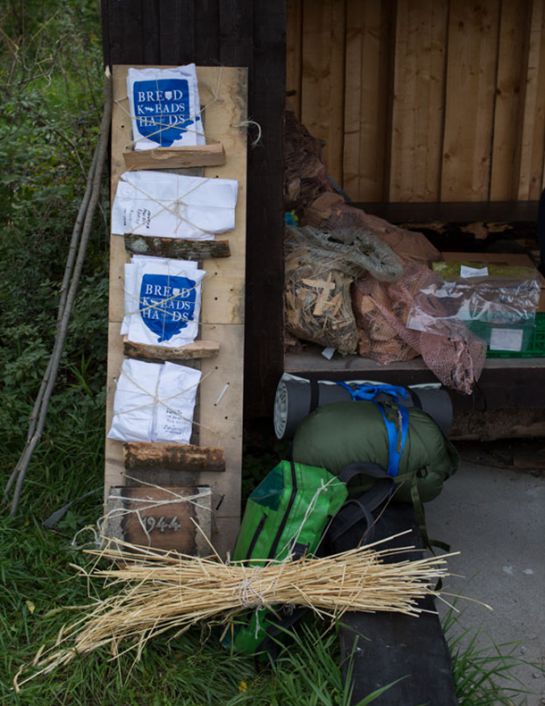
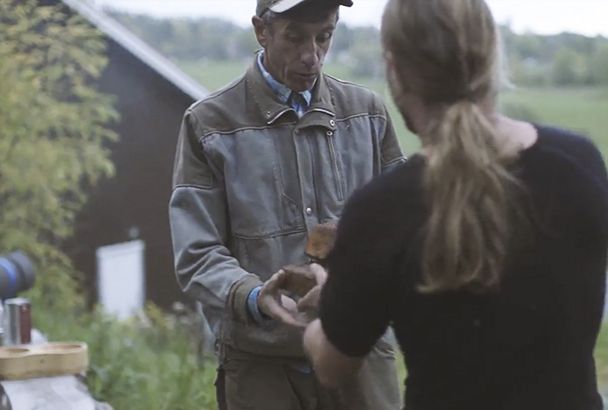

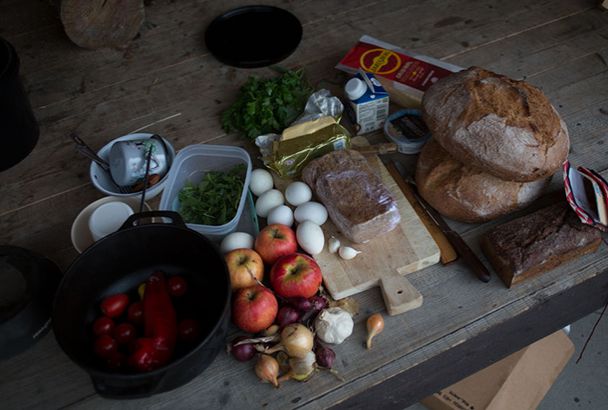
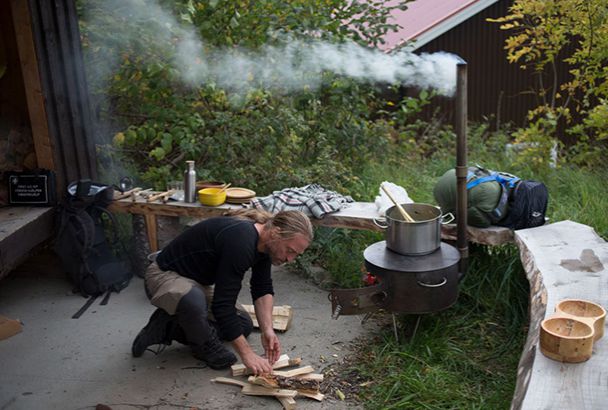
The second and third days were spent in “common” shelters - those that dot the country whereby one can stay for free. The days were heavy with rain and wind, but the walkers carried on and were enchanted by their last nite with Camphill Solborg, an anthroposophic community where they were offered warm showers and beds.
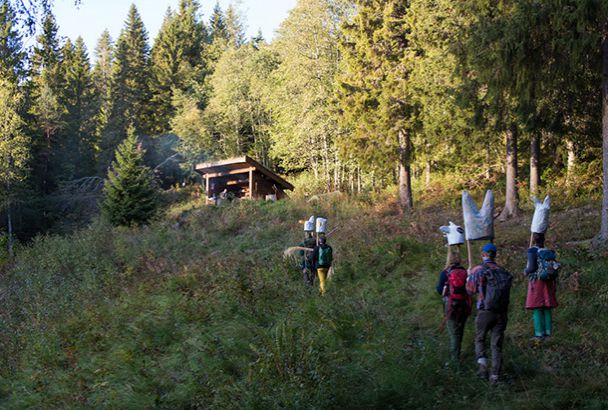
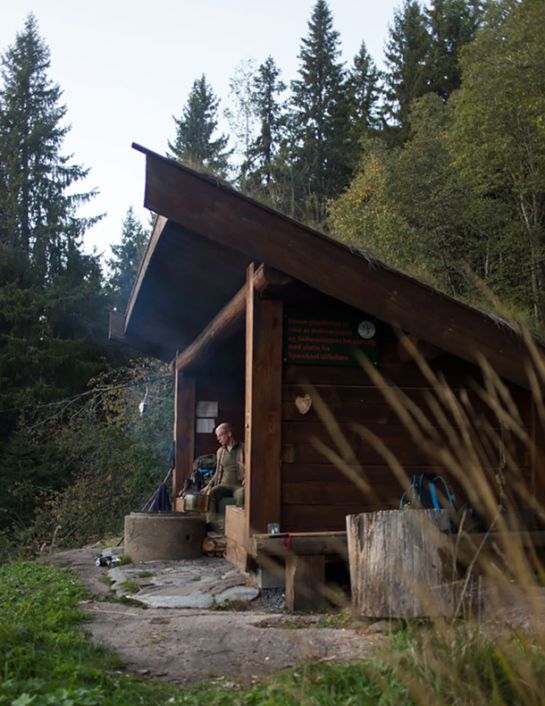

Scene 4: THE MEETING
They perform a reverse experiment in which the human becomes marine. Where the hills meet the shore, farmers Johan Swård and Petter Jenssen approach upon a small wooden rowboat.
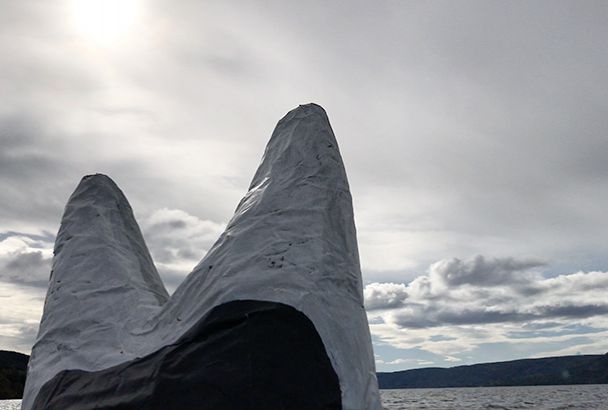
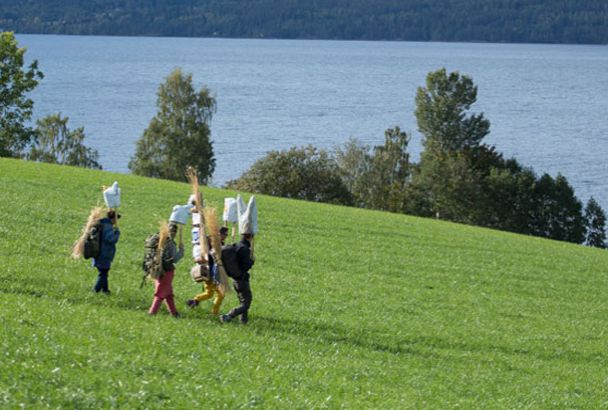
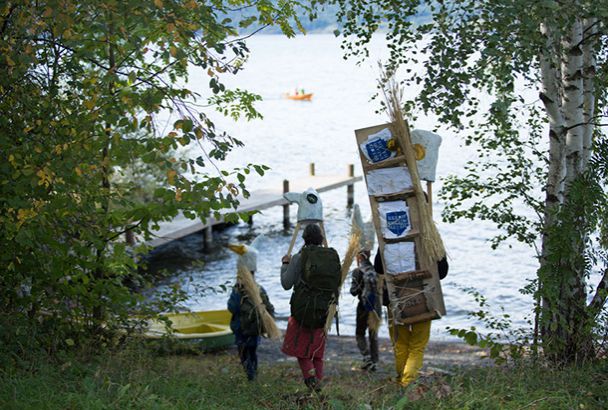
Greeted with shivering excitement, Johan was given a small timepiece holding one finish rye grain. Quickly put around his neck, time as we know it stood still and a rowing, rowing rhythm pulled the walkers and all of their provisions swiftly across the ripping surface of Ransfjorden.
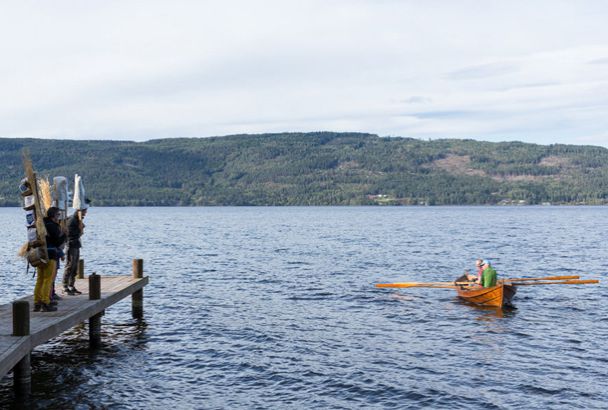
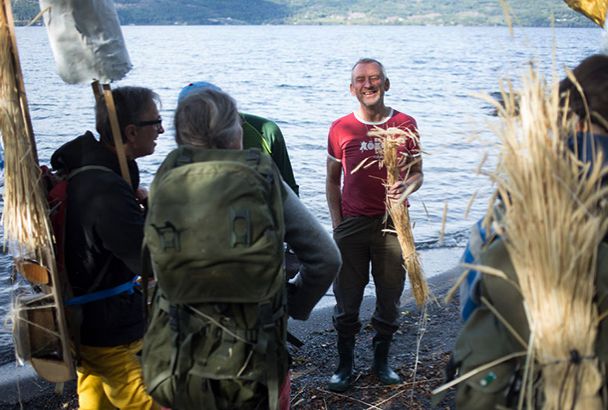

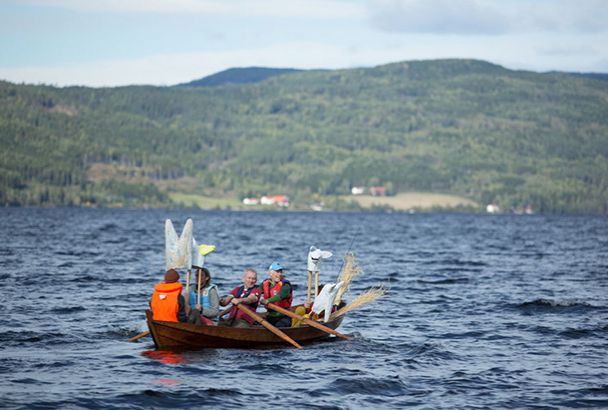
Scene 5: THE ARRIVAL
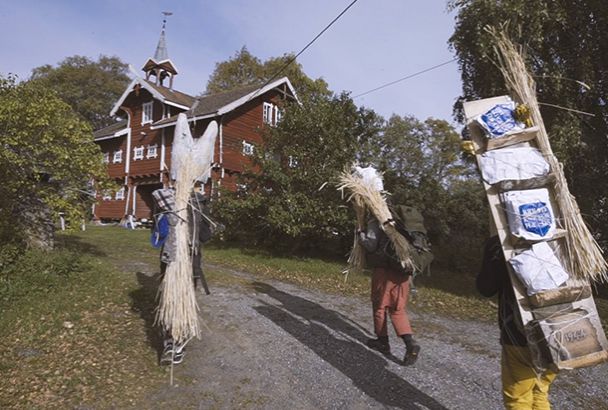
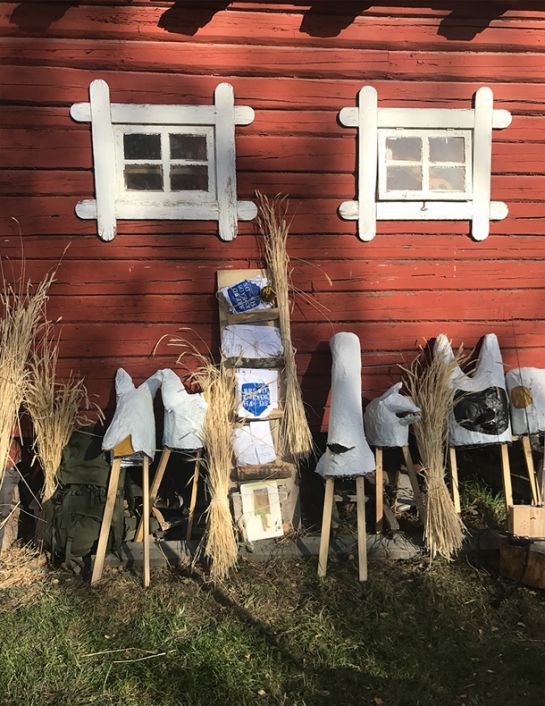
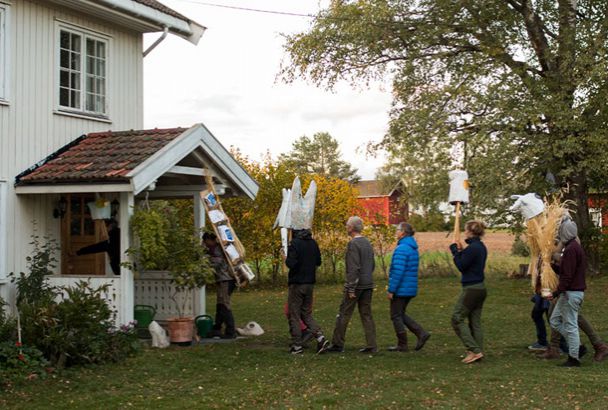
Scene 6:
A RETURN
Further On … to Land is a “return” - a return of the grains that Johan Swård provided to Futurefarmers’ Flatbread Society in 2011. A return of grains that have been grown for over 5 years time and now portray a multi-layered portrait of the new cultural landscape in Oslo, Losæter. A few handful of seeds has now become a durable field and population that has been distributed further to other farmers and in the form of flatbread baked in the Bakehouse. Among the return are seeds collected on Seed Journey, flatbreads, bundles of grains from Losæter and a message in a bottle found on the shore when the walkers met the rowers.
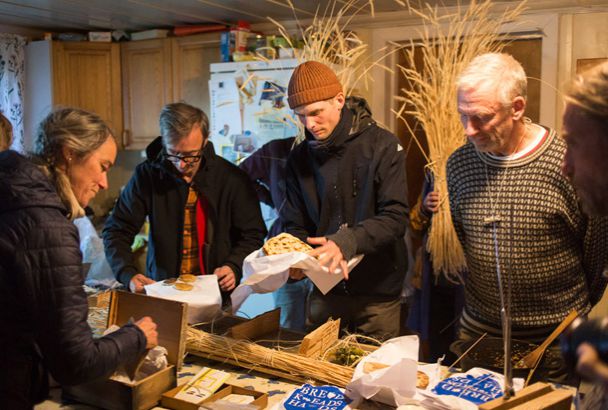
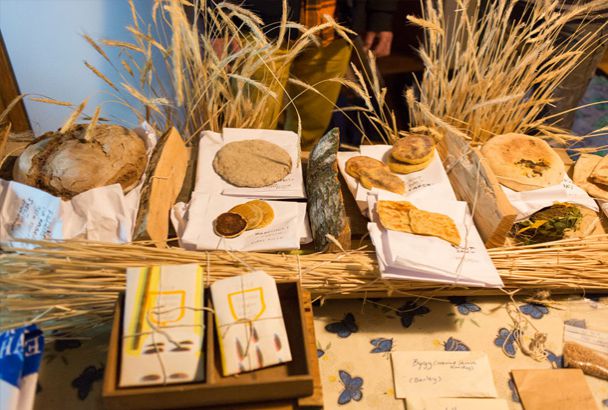
Scene 7: A TABLE
“How did we get here?”, asks farmer Johan Swård as the walkers assembled around the family table. The table where initial discussions of ancient grains, soil and common land were held. The table that hosted Futurefarmers and Erik Joner to discuss soil science and the possibility of a grain field upon the barren land in Oslo – where the idea of Soil Procession was born. The table where a plan for a permanent farm was discussed with newly appointed farmer, Andreas Capjon. The table that Johan and Kristen Swård and family so generously set with freshly baked bread and offered as a site of knowledge exchange, questioning and possibilities. Still seemingly unbelievable what has transpired since 2011, the walkers’ reply to Johan was, “Where are we going?”.

Further On…
Further On… to Land was the culmination of eight years work on the public art project Flatbread Society in Bjørvika. It was not a departure but a decollage—a migratory act. It also marked the beginning of a two-year pilgrimage by Oslo-basked baker and Flatbread Society co-hort, Emmanuel Rang (partner in Åpent Bakeri, Oslo). Emmanuel’s walk draws upon a centuries old tradition of the wandering craftsperson (compagnonnage or journeyman) whereby a young craftsperson’s traditional, technical education included taking a tour and doing apprenticeships with masters. Emmanuel will bake and travel, visiting many different farmers, using different ovens, restoring ovens and he will spread his knowledge and learn along the way.
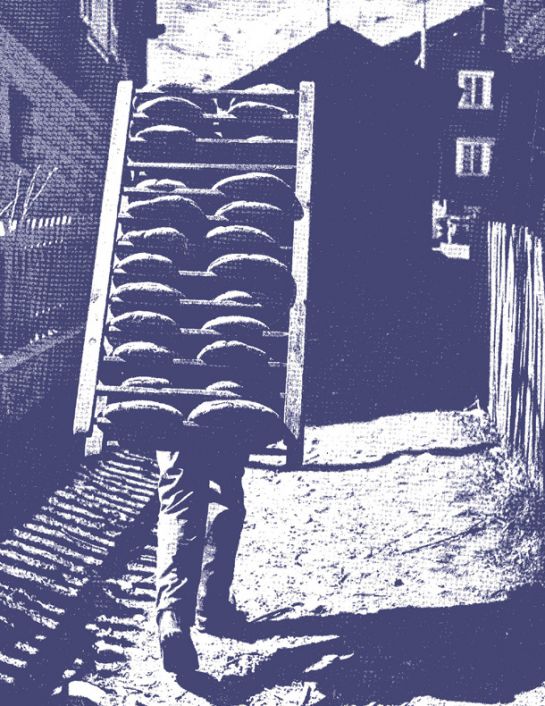
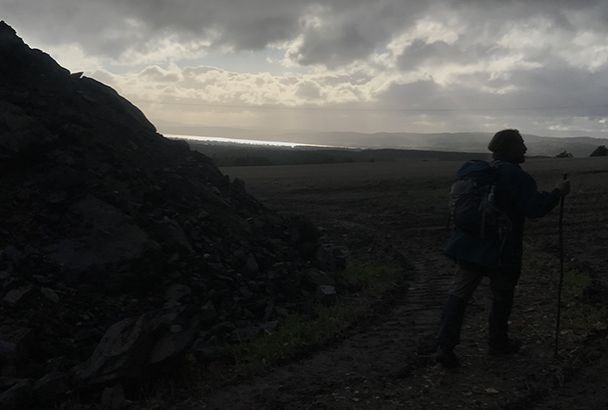
+
Special thanks to the Carriers of Tents and Stoves:
- Marthe Van Dessel, Futurefarmers, artist, Belgium
- Alice Versieux, Artist, Belgium
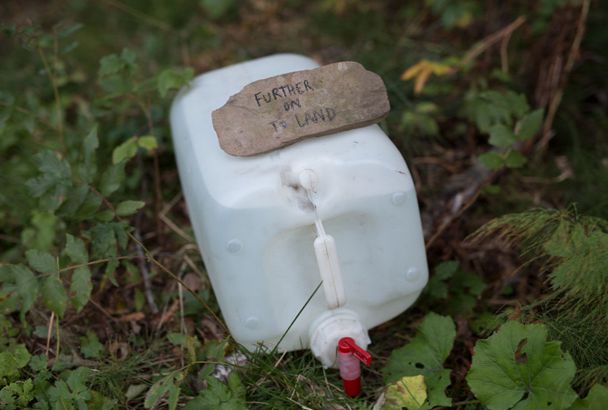
++
The suite of masks was made with artist Alexander Slotten while in residence at Tenthaus Oslo. During a 3-day workshop, Masking Migratory worked from images of migratory species and used minimal materials; newspaper, wheat paste (yes, made from Finish Rye flour) and colored pigments - the ingredients for a new migratory species.
Photos by Jo Straube and Video Stills by Alex Asensi
Video by Alex Asensi



